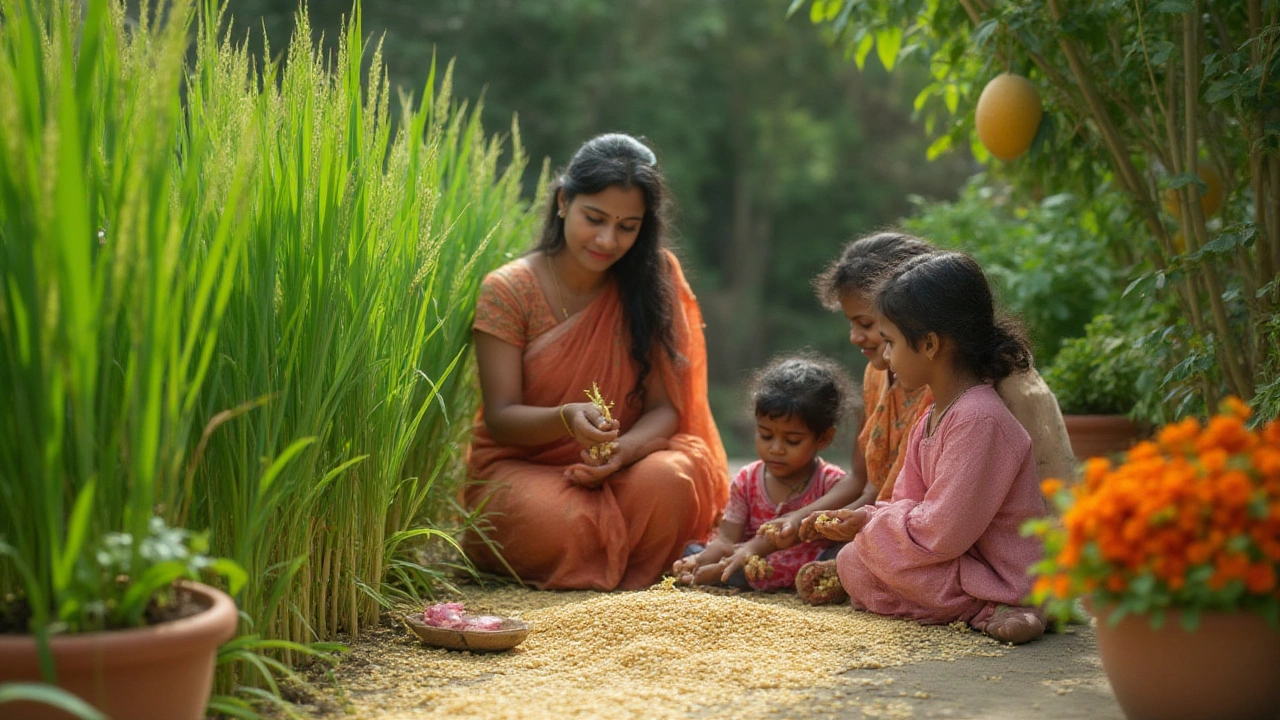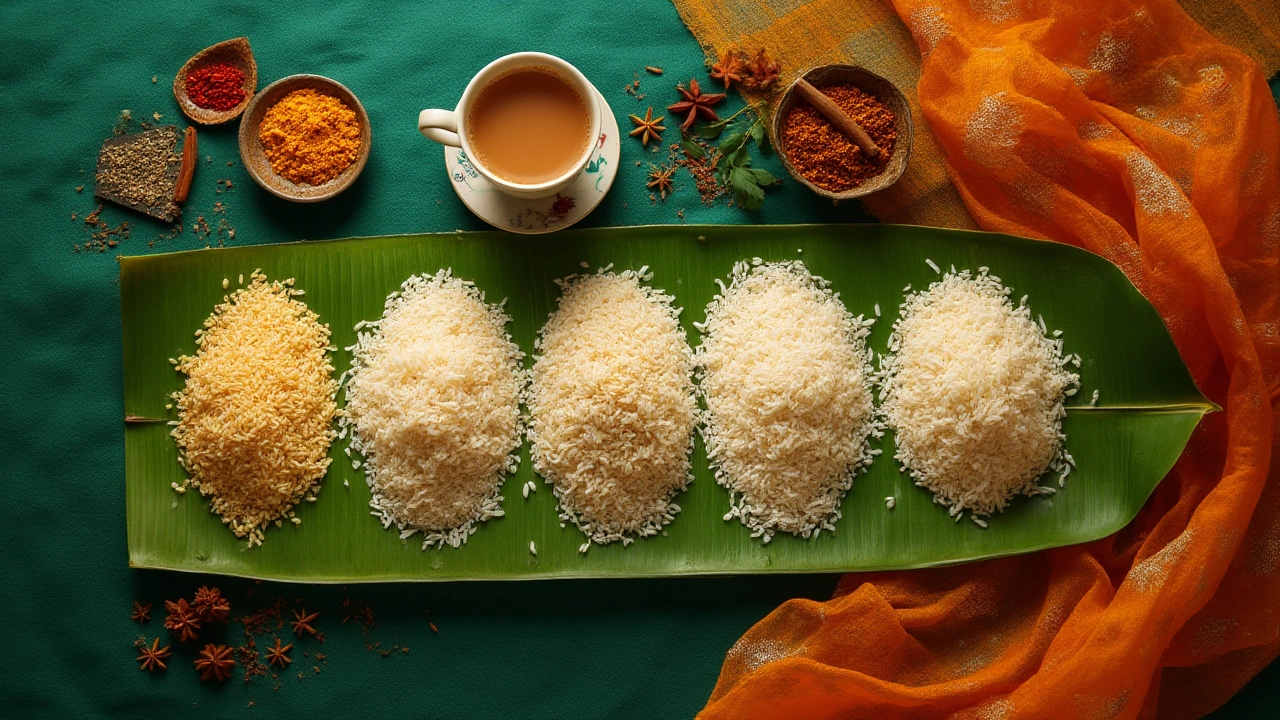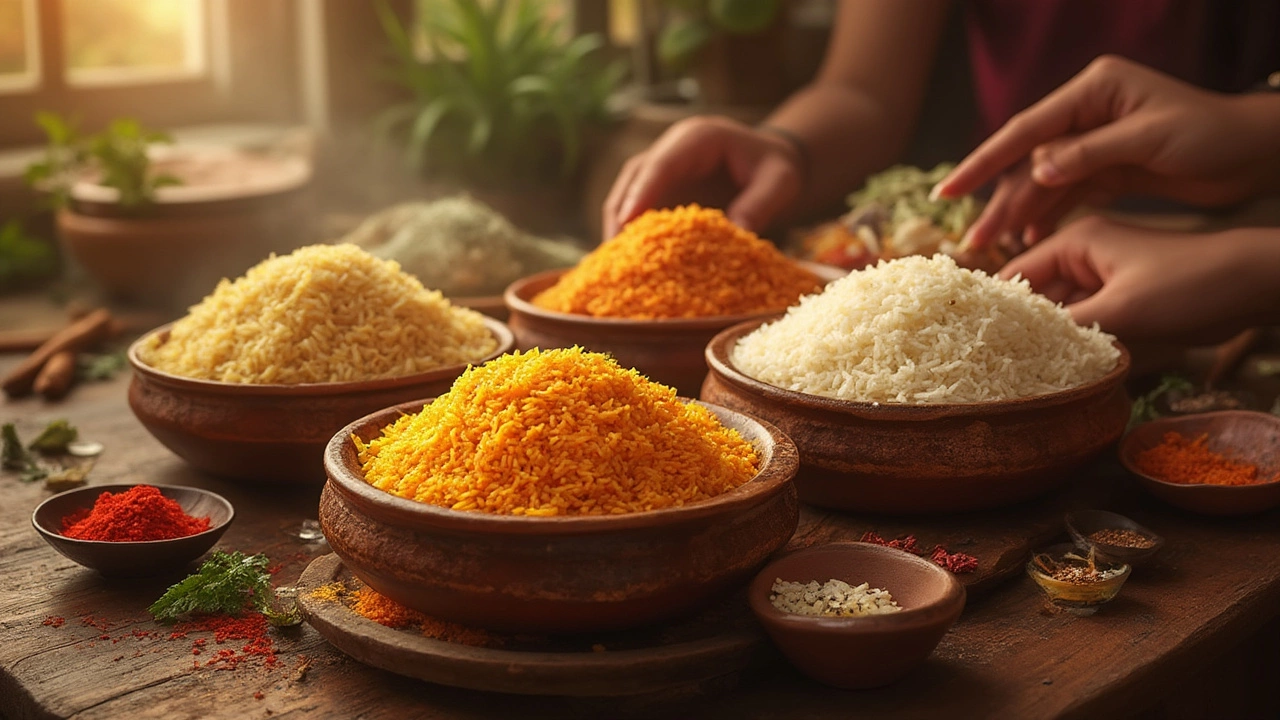Rice might seem simple—just swap out the water and toss in the grains, right? But have you ever thought about where your bag of rice really comes from? If you live in the United States or just love American-grown produce, this question comes up way more than you’d expect. The grocery aisle is packed with bags boasting different locations in tiny print and names that sound like distant fields. But in reality, there’s a serious rice industry in the U.S., and some of the world’s best brands are born right here. It’s not just Southern tradition or a matter of pride—knowing the brands and what grows in American soil can help you cook better rice, support local farmers, and even grow some of your own.
The Big States: Where Rice is Grown in the USA
The United States isn’t jam-packed with rice paddies like Vietnam or Thailand, but you’d be surprised by just how much gets grown each year. In fact, America is the fifth largest exporter of rice, pumping out nearly 20 billion pounds annually, according to the U.S. Department of Agriculture. The big states doing the heavy lifting are Arkansas (which produces nearly half of all U.S. rice), California, Louisiana, Mississippi, Missouri, and Texas. Arkansas’s paddies stretch for miles, especially in the Mississippi Alluvial Plain—locals call it "The Delta." California takes things a bit differently, focusing on Japonica types, grown mostly in its Sacramento Valley. Louisiana and the Gulf Coast states stick mostly to long grain varieties, matching up with their favorite regional dishes.
Rice farming in the U.S. is all about water and weather. These states have huge river systems and warm, sticky summers. Flooded fields help keep the rice happy and the weeds down. Seasonal rains, planned irrigation, and savvy farmers do the rest. The growing regions are so specialized that a bag labeled “California rice” will taste and cook differently than something from the South—one reason why knowing your brand really matters.
If you get really into numbers, check this out: Arkansas churns out about 96,000 rice-growing acres, according to the most recent USDA Planting Intentions report. California comes next, usually around 430,000 acres, but their yields are often higher per acre. These major growing states also house most of the nation’s leading brands and co-ops.
Major American Rice Brands: Names You’ll Recognize
Walk down any U.S. grocery aisle, and you’ll see a handful of rice brands that pop up everywhere. Most of them source their rice from right here in the States. Some brands export nearly as much as they sell back home. The big names? Think of Riceland, Lundberg, Mahatma, Carolina, and RiceSelect. Here’s what sets each apart:
- Riceland: Headquartered in Arkansas, Riceland is the largest rice miller and marketer in the U.S. Their bags are a staple in the South and Midwest. They own their own fields and focus mainly on long-grain and medium-grain. If you want to cook the classic Southern fluffy rice or gumbo, Riceland’s your bet.
- Lundberg Family Farms: Based in California’s Sacramento Valley, Lundberg leads the pack with organic and specialty rice. They’re all about sustainability, non-GMO crops, and unique varieties—jasmine, basmati, wild rice blends, and their cult-favorite “short grain brown.” If you like chewy, nutty brown rice or just want something more eco-conscious, Lundberg’s got it.
- Carolina: Despite the name, most Carolina rice comes from Arkansas, Louisiana, and Texas. It’s a familiar bag on U.S. shelves, sun yellow with bold black text, found everywhere from Walmart to small-town grocery stores. Known for versatility and large bag sizes.
- RiceSelect: Out of Texas, RiceSelect makes those fat plastic jars you see on Costco or Amazon shelves. They push Texmati rice (a U.S.-bred jasmine-basmati hybrid), Royal Basmati, and specialty couscous and orzo too. They’re popular for their resealable storage and unique blends.
- Mahatma: Major presence in the South and Central U.S., Mahatma offers long grain, parboiled, and that reliable American-grown jasmine. They share facilities with Carolina and have a similar Southern heritage. Their extra-long grain white rice is a staple for pilafs and jambalaya.
There are plenty of smaller regional brands, but those five dominate shelf space and export most of their U.S.-grown harvest too. If you’re conscious about eating American, check the back of the bag: "Grown in the USA" is almost always proudly stamped there. Also worth mentioning: many store brands (Kroger, Walmart’s Great Value, Safeway’s Signature Select) are just re-bagged from the bigger millers above, so you usually get real U.S. rice even when the brand isn’t familiar.

Types of Rice Grown by American Brands
If you think all rice is the same, the variety might surprise you. U.S. farms grow several types suited to different cuisines and diets. The main categories:
- Long Grain White Rice: This is the basic, fluffy staple used in jambalaya, stir fry, or just as a dinner side. Grown mostly in Arkansas, Texas, and the South.
- Medium and Short Grain Rice: Clumpier and stickier, perfect for sushi, California rolls, and rice pudding. California’s Sacramento Valley is the king here. Want silkier risotto? Try U.S. Arborio, another short grain.
- Brown Rice: The same as above, but with the hull left intact for fiber and taste. Lundberg, Riceland, and Mahatma all offer brown and organic options, and you get a pleasant nutty flavor with more chew.
- Specialty Varieties: Think Jasmine, Basmati, Wild Rice, Red Rice, or Black Rice. Some brands—Lundberg, RiceSelect, and even Riceland—now breed and sell these types under “American Jasmine” or “Texmati” to compete against imported stuff.
Each type serves a different kitchen goal. Long grain is fluffy (doesn’t stick) and goes with everything. Medium and short grains are for sushi, risotto, or cuisines that want stickier rice. Brown, red, or black rice bring extra nutrition and strong flavor. Culinary pros say water ratios, soaking time, and even the kind of pan make a bigger difference than you’d expect. If you want to taste the difference, a blind side-by-side will open your eyes—even my son Milo, who thought all rice was "the same," could pick out California sushi rice over Southern long grain instantly.
| Type | Primary Region | Common Brands | Best Dishes |
|---|---|---|---|
| Long Grain | Arkansas, Louisiana, Texas | Riceland, Carolina, Mahatma | Pilaf, Stir Fry, Gumbo |
| Medium/Short Grain | California | Lundberg | Sushi, Risotto, Pudding |
| Brown | All regions | Lundberg, Mahatma, Riceland | Bowl meals, Salads |
| Specialty | California, Texas | RiceSelect, Lundberg | Paella, Jasmine, Wild Rice Soup |
Tips for Choosing the Best USA-Grown Rice
Forget the marketing buzzwords. If you want solid, honest rice grown on U.S. soil, there are a few ways to make sure you’re getting the real deal. First, look for the "Grown in the USA" label—this is required on most packages if it’s legitimately sourced from American farms. Also, check the type and region; if you want Japanese-style sticky rice for homemade sushi, go for California-grown medium/short grain from the Sacramento Valley. If you’re after pure Southern comfort, long grain from Arkansas or Louisiana is a safe bet.
- If you’re into organics or want lower pesticides, stick with brands like Lundberg or anything USDA Organic certified. They’ll cost more but usually bring extra peace of mind if you’re feeding kids, like my picky eater Milo.
- Choose according to the dish. Different recipes truly demand different rice: long grain won’t work for risotto, and sticky sushi rice just falls flat in fried rice. Read the back of the bag for recommended uses.
- Bulk rice isn’t always better. Cheap bulk bags may sometimes mix in imported rice, even with a U.S. miller’s name. For the purest American rice, try mid-size bags or those certified by the USA Rice Federation.
- Support local co-ops or smaller farm brands if you find them—these producers often have the freshest taste and really care about quality.
- Consider trying something new—a lot of American farms grow boutique varieties like red, black, or wild rice blends. Toss them in a salad or side and see if your tastebuds notice the difference.
- Dry, dark storage is the trick for keeping rice fresh. Most white or brown rice lasts up to a year in a sealed container.
If you have dietary needs, check the label for enrichment (added vitamins, common in white rice but not brown) and potential allergens. All major U.S. rice is naturally gluten-free, but specialty blends or processed pilaf mixes might include wheat or soy sauce.

Fun Facts, Industry Trends, and Growing Rice at Home
Here’s something wild—not all rice paddies are in swamps. In the U.S., flooded fields are used mostly to control weeds and pests, and nearly all of the water is recycled after harvest. California leads in water-saving methods; some farms even use duck patrols instead of pesticides, letting the birds eat bugs while fertilizing the fields. The oldest commercial rice mill in America is Lee Richardson in Louisiana, still up and running after 150 years.
The rice industry is huge in the U.S.—over 125,000 U.S. jobs rely on it. About 85% of the rice eaten domestically is grown by American farmers. American rice is also a secret powerhouse of the global market: even Middle Eastern countries like Turkey and Iraq import U.S. rice, especially after droughts or wars disrupt their own harvests.
If you want to grow rice yourself, it’s more doable than you might think. Any shallow, waterproof container—a kiddie pool or cheap garden pond—can work. Start with seeds of a USA-grown variety (Riceland, Carolina, or even Lundberg medium-grain). Fill with 4 inches of healthy soil, sow the soaked seed shallow, and keep flooded for the first six weeks. As the plants mature, slowly drain to allow the tops to ripen. It’ll take 4-6 months start to finish, depending on your climate and the rice type. You won’t fill the pantry in year one, but the taste of just-harvested grain you grew yourself is next-level.
With the U.S. rice harvest getting greener—less water, lower pesticide loads, and more attention to soil health—supporting homegrown brands means backing forward-thinking farming too. Next time you see rice at the store, check where it’s from. The perfect bowl might be a whole lot closer than you realize.

